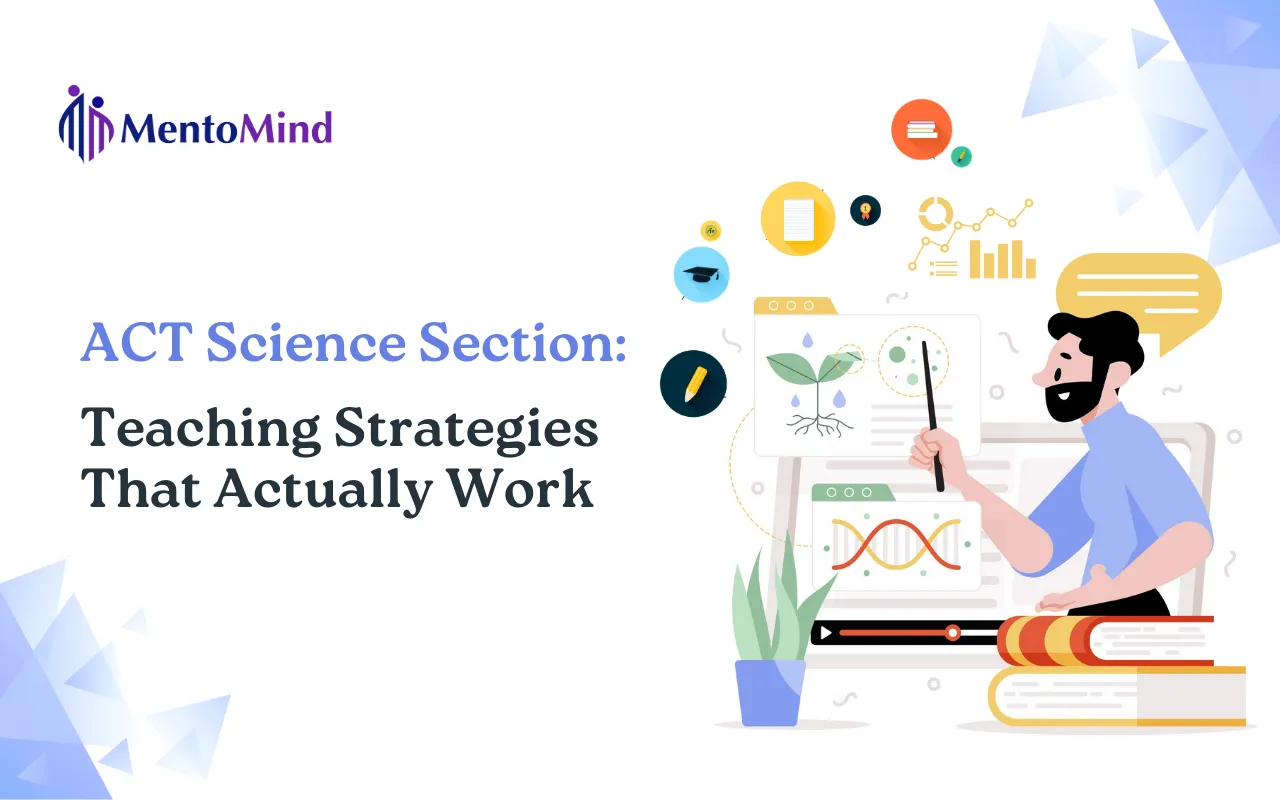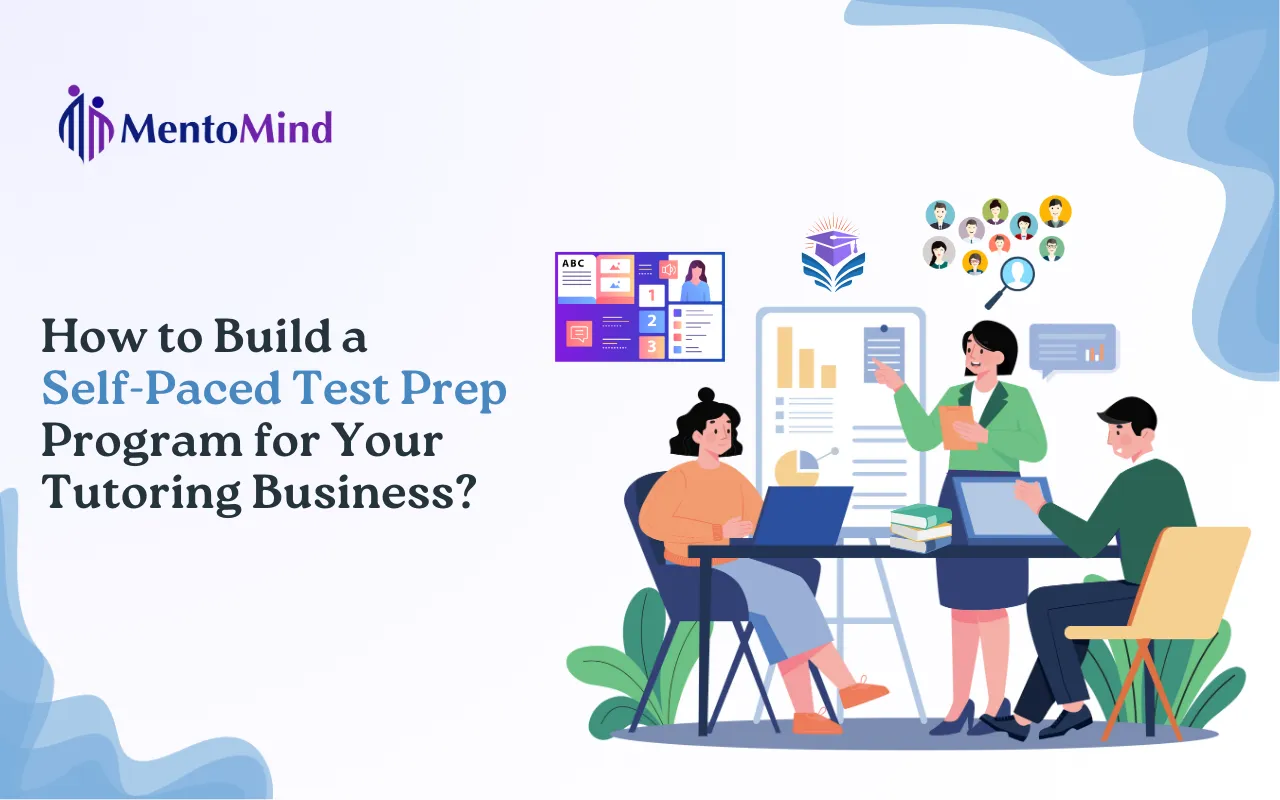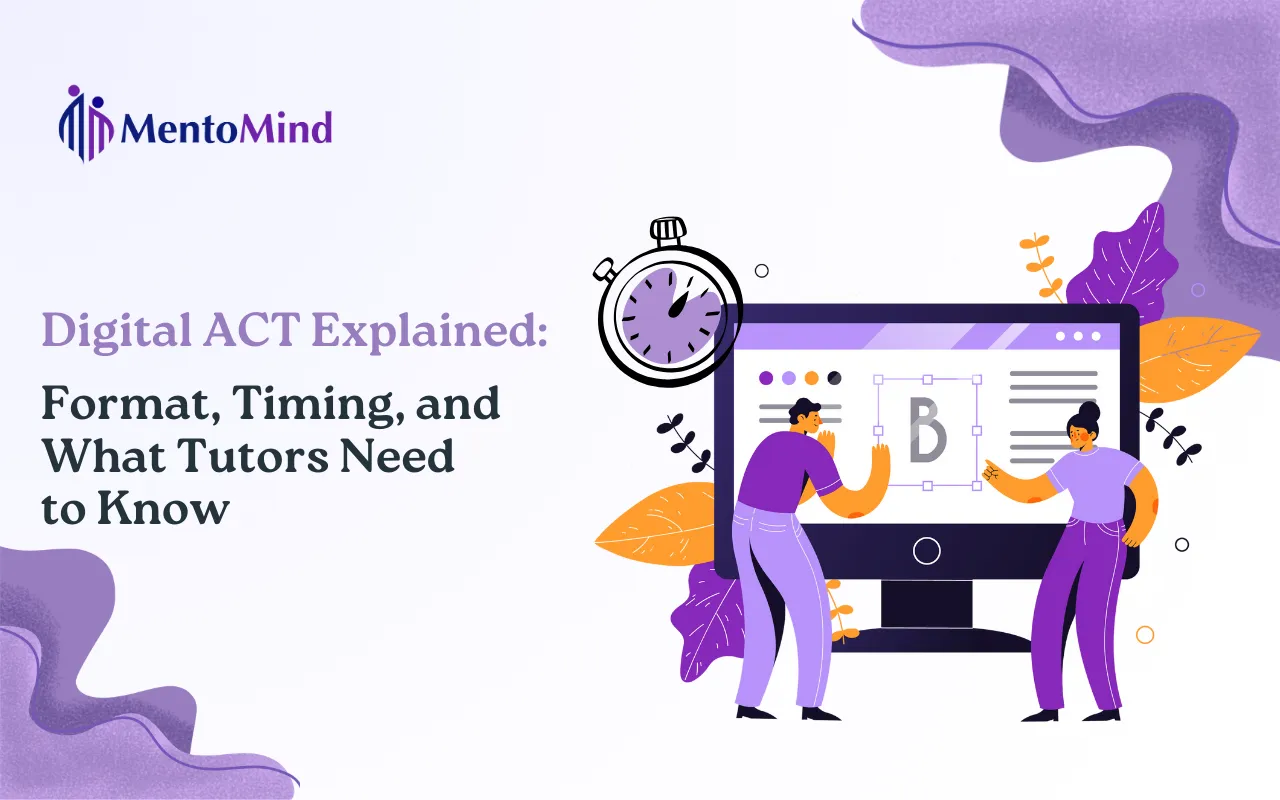Creating a successful online course requires more than uploading lessons or sharing worksheets. A truly effective course is intentionally structured so students progress with clarity, stay engaged throughout, and achieve measurable outcomes.
When structure is unclear, students feel lost and tutors spend time answering avoidable questions. When structure is strong, students move confidently from concept to mastery while tutors scale their teaching impact.
This guide explains how to design online courses that are easy to navigate, purposeful, and aligned with student learning goals. With the right structure, your courses become high-impact teaching tools that work for both self-paced learners and live instruction.
Why Does Course Structure Matter?
Course structure determines whether students complete your material or abandon it halfway through.
Clear Path Reduces Confusion
A strong structure shows students what they’ll learn, how content fits together, and what comes next. When the learning path is obvious, student anxiety decreases and completion rates increase.
Engagement Depends on Flow
Well-structured courses maintain momentum. Students move naturally from concept introduction to practice to mastery without wondering “What should I do now?” Poor structure creates friction that breaks engagement.
Fewer Support Questions
When progression is logical and expectations are clear, students solve problems independently. Tutors spend less time clarifying navigation and more time providing meaningful instruction.
Better Learning Outcomes
Structured courses ensure students encounter concepts in optimal sequence. Foundational knowledge builds before advanced applications appear, creating understanding rather than confusion.
Scalability Requires Structure
A well-structured course works whether you’re teaching five students or fifty. The framework supports independent learning, live instruction, and hybrid models without requiring constant tutor intervention.
What Makes a High-Quality Online Course Structure?
A high-quality course follows consistent organizational principles that guide students from introduction to mastery.
Clear Learning Objectives
Every course should begin with explicit outcomes. Students need to know:
- What skills they’ll gain
- What level of proficiency they’ll achieve
- How this knowledge applies to their goals
- What they can accomplish after completion
Objectives create direction and help students evaluate whether the course meets their needs.
Logical Topic Progression
Content should flow from:
- Foundational concepts (definitions, basic principles, core knowledge)
- Guided application (worked examples, step-by-step practice)
- Independent practice (problem sets, exercises without guidance)
- Mastery assessment (comprehensive tests, real-world application)
This progression mirrors how learning actually happens, building confidence at each stage.
Topic-Based Organization
Break content into self-contained topics representing major concepts. Each topic should:
- Focus on one primary skill or concept
- Take 30-90 minutes to complete
- Include multiple content types
- End with practice or assessment
- Connect logically to previous and next topics
Students can complete topics in focused sessions rather than feeling overwhelmed by massive content blocks.
Consistent Lesson Structure
Within topics, maintain consistent lesson formats. Students perform better when they know what to expect. A reliable pattern might include:
- Learning objective (what this lesson teaches)
- Concept explanation (theory, definitions, principles)
- Worked examples (demonstrations showing application)
- Guided practice (students try with support)
- Independent practice (problem sets for skill building)
- Summary (key takeaways and next steps)
Consistency reduces cognitive load, letting students focus on content rather than navigation.
Multiple Content Formats
Students learn better when exposed to concepts through varied formats:
Text-Based Content:
- Explanations and definitions
- Step-by-step guides
- Reference materials
Practice Materials:
- Problem sets organized by difficulty
- Practice questions with immediate feedback
- Flashcards for quick review
Assessments:
- Topic quizzes checking comprehension
- Practice tests simulating real exams
- Cumulative assessments measuring mastery
Interactive Elements:
- Question banks students can access repeatedly
- Assignments for graded work
- Progress tracking showing completion
Variety maintains engagement and accommodates different learning preferences.
Learn How AI Helps Tutors Create Better Questions and Explanations
Strategic Assessment Placement
Assessment timing affects both learning and motivation:
After Individual Lessons: Short 3-5 question quizzes checking basic comprehension. These quick checkpoints confirm understanding before moving forward.
After Topic Completion: Problem sets with 10-20 questions across difficulty levels. These build skill through repeated practice and pattern recognition.
After Major Milestones: Practice tests covering multiple topics. These comprehensive assessments show progress and identify gaps needing review.
Throughout the Course: Flashcards for ongoing review. These spaced repetition tools strengthen long-term retention.
The rhythm of “learn, practice, assess, repeat” creates effective learning cycles.
How Should I Organize Course Topics?
Strong topic organization creates natural learning flow without overwhelming students.
Topic Design Principles:
Single Focus: Each topic addresses one major concept or skill. Avoid cramming multiple unrelated ideas into single topics. “Linear Equations” is focused; ” Algebra” is not.
Logical Sequencing: Topics build on previous knowledge. Start with foundations students need before introducing concepts that depend on them. Teach basic equations before systems of equations.
Balanced Content: Topics should feel substantial but manageable. Too short feels incomplete; too long overwhelms. Most topics take 30-90 minutes to complete, including instruction, practice, and assessment.
Clear Entry and Exit: Each topic begins with objectives stating what students will learn and ends with summary reviewing key concepts and previewing what’s next.
What to Include in Each Topic:
Introduction Section: State objectives clearly, connect to previous learning, set expectations for time and difficulty.
Instruction Section: Explain core concepts with definitions, examples, and demonstrations. Show real-world applications.
Practice Section: Provide problem sets organized by difficulty (Beginner, Intermediate, Advanced, Mastery). Include immediate feedback and detailed explanations.
Assessment Section: Add quizzes or checkpoints measuring comprehension. Track scores for progress monitoring.
Summary Section: Recap key concepts, connect to upcoming topics, suggest additional practice if needed.
Topic Grouping:
Related topics can be grouped under categories:
- Category: Algebra → Topics: Linear Equations, Quadratic Functions, Systems of Equations
- Category: Reading → Topics: Main Ideas, Supporting Details, Author’s Purpose
- Category: Cell Biology → Topics: Cell Structure, Cell Division, Cellular Respiration
This hierarchical organization (Category → Topics → Subtopics) creates clear navigation and helps students understand how concepts relate.
How Do I Create Smooth Transitions Between Topics?
Transitions prevent courses from feeling like disconnected lessons. Strong connections create cohesive learning journeys.
Connect Previous to Current:
Start each topic by referencing what students learned previously:
- “Now that you understand linear equations, we’ll explore systems with two equations”
- “Building on grammar rules from the previous topic, we’ll apply them to reading passages”
- “You’ve mastered cell structure; now we’ll see how cells divide”
This reinforces prior learning while showing logical progression.
Review What’s Coming:
End each topic by foreshadowing next content:
- “Next, we’ll use these algebra skills to solve word problems”
- “In the next topic, you’ll apply these concepts to real SAT passages”
- “Our next topic builds on this foundation to explore genetics”
Forward-looking statements maintain momentum and curiosity.
Show the Big Picture:
Remind students where they are in the overall learning path:
- “You’ve completed 3 of 8 topics in SAT Math fundamentals”
- “This completes the grammar section; next we move to reading comprehension”
- “You’ve finished foundational biology; advanced topics begin now”
Context helps students see progress toward ultimate goals.
How Can I Design Courses for Both Self-Paced and Live Learning?
Modern courses must support multiple teaching models. Flexible structure accommodates different learning preferences.
Self-Paced Course Requirements:
Standalone Explanations: Every concept must be clear without tutor explanation. Write assuming students learn independently.
Immediate Feedback: Auto-graded assessments provide instant results. Students know immediately whether they understand concepts.
Clear Navigation: Obvious next steps prevent students from getting lost. Each lesson ends with “Next: [Topic Name]” guidance.
Progress Tracking: Visual completion indicators motivate continued learning. Students see how much they’ve accomplished and what remains.
Live Tutoring Requirements:
Flexible Content: Tutors can skip, reorder, or emphasize topics based on student needs during sessions.
Discussion Points: Content includes natural stopping points for tutor questions and explanations.
Supplemental Practice: Tutors can assign additional problem sets targeting specific weaknesses identified during instruction.
Notes and Annotations: Tutors can add personalized guidance, examples, or clarifications without disrupting course structure.
Hybrid Model Best Practices:
Combine self-paced content with live support:
Students:
- Complete concept instruction independently
- Attempt practice problem sets
- Take topic quizzes
Tutors:
- Review analytics showing student performance
- Address struggling topics during live sessions
- Provide personalized problem sets for weak areas
- Guide students through advanced applications
This model maximizes tutor efficiency while maintaining personalized instruction.
What Role Do Problem Sets Play in Course Structure?
Problem sets are essential for skill development. They bridge understanding and mastery through repeated application.
Why Problem Sets Matter:
Skill Building: Repetition across varied contexts strengthens neural pathways. Students develop fluency through practice volume.
Pattern Recognition: Encountering concepts in different formats helps students identify underlying principles rather than memorizing specific examples.
Confidence Building: Starting with easier problems and progressing to harder ones creates success experiences that motivate continued effort.
Gap Identification: Performance on problem sets reveals specific weaknesses. Students and tutors see exactly what needs additional practice.
Problem Set Design Principles:
Organize by Difficulty:
- Beginner: 10-15 questions reviewing basics
- Intermediate: 10-15 questions requiring application
- Advanced: 10-15 questions with complex scenarios
- Mastery: 5-10 questions testing deep understanding
Include Variety: Mix question types, contexts, and formats. Avoid repetitive problems that only change numbers.
Provide Explanations: Include detailed answer explanations showing step-by-step solutions. Students learn from mistakes through clear feedback.
Allow Repetition: Let students retry problem sets multiple times. Mastery develops through repeated exposure, not single attempts.
Track Performance: Show scores, accuracy rates, and time spent. Analytics help students gauge progress and tutors identify intervention needs.
Strategic Placement:
After Concept Instruction: 10-15 beginner-level problems reinforcing what was just taught.
Mid-Topic: 15-20 intermediate problems applying concepts in varied contexts.
Topic End: 20-30 mixed difficulty problems preparing for assessment.
Between Topics: Cumulative problem sets reviewing previous topics while introducing preview questions.
How Do I Add Progress Tracking That Motivates Students?
Visible progress transforms abstract learning into concrete achievement. Effective tracking maintains motivation throughout courses.
Essential Progress Indicators:
Completion Tracking:
- Lessons completed vs. total lessons
- Topics finished vs. total topics
- Overall course percentage complete
- Visual progress bars showing advancement
Performance Metrics:
- Quiz and test scores over time
- Accuracy rates on problem sets
- Difficulty level progression (Beginner → Mastery)
- Time spent per topic
Mastery Levels:
- Topics marked as Beginner, Intermediate, Advanced, or Mastery
- Visual badges or indicators showing level achieved
- Clear criteria for advancing levels
- Celebration of mastery achievement
Engagement Data:
- Login frequency and consistency
- Daily/weekly streak tracking
- Total practice questions attempted
- Course engagement patterns
Motivation Through Milestones:
Topic Completion: Celebrate finishing each topic with completion messages and visual checkmarks.
Difficulty Progression: Acknowledge when students advance from Beginner to Intermediate, Intermediate to Advanced, or Advanced to Mastery.
Score Improvements: Highlight when quiz or test scores increase compared to previous attempts.
Practice Volume: Recognize students who complete large numbers of practice questions, showing dedication.
Analytics for Tutors:
Individual Student Dashboards:
- Topic-by-topic performance breakdown
- Questions frequently missed
- Time spent per topic
- Completion rates and pace
Class-Wide Insights:
- Average performance by topic
- Common struggling areas
- Engagement patterns
- Completion trends
Use this data to refine courses, adjust difficulty, and provide targeted support.
How Often Should I Update My Course?
Courses require maintenance to remain effective. Regular updates keep content relevant and address student needs.
Quarterly Content Review:
Every 3 months, evaluate:
- Student performance data showing weak topics
- Feedback indicating confusing explanations
- Completion rates revealing engagement issues
- Question accuracy identifying problems that are too easy or hard
Make adjustments based on data, not assumptions.
Annual Major Updates:
Once yearly, conduct comprehensive reviews:
- Refresh examples to maintain relevance
- Expand thin content areas with more practice
- Update assessments if standards changed
- Reorganize topics if progression seems unclear
- Add new content addressing student requests
Time Investment for Updates:
- Quarterly reviews: 1-2 hours
- Annual updates: 3-6 hours
When to Update Immediately:
Errors: Fix mistakes in questions, answers, or explanations as soon as discovered.
Outdated Content: Update information that became incorrect due to external changes.
Student Confusion: Revise sections generating consistent support questions.
Course Structure Glossary
Topic: A self-contained course section representing one major concept or skill, typically taking 30-90 minutes to complete, including instruction, practice, and assessment.
Learning Objective: A clear statement describing specific skills or knowledge students will gain by completing a lesson, topic, or entire course.
Problem Set: A curated collection of practice questions organized by difficulty level that builds skill through repeated application across varied contexts.
Difficulty Progression: The systematic advancement through learning levels (Beginner, Intermediate, Advanced, Mastery) that guides students from foundational knowledge to expert proficiency.
Hybrid Learning Model: Teaching approach combining self-paced course content with scheduled live tutoring sessions for questions, clarification, and personalized instruction.
Progress Tracking: Visual indicators and metrics showing course completion, performance scores, mastery levels, and engagement patterns that motivate continued learning.
Build Well-Structured Courses That Drive Results
High-quality online course structure creates clear learning paths through logical topic organization, consistent lesson formats, strategic problem set placement, smooth transitions, and visible progress tracking, enabling students to progress confidently from foundational concepts to mastery while reducing tutor support needs.
Course structure determines success more than content volume. A well-organized 8-topic course with clear progression outperforms a 20-topic course with confusing navigation.
Students stay engaged when they know what to learn, see how topics connect, practice systematically through problem sets, track their progress, and feel confident about next steps. Tutors scale their impact when courses work independently while supporting both self-paced and live learning models.
MentoMind’s course builder supports strong structure through AI-powered topic hierarchy generation, comprehensive problem set creation, systematic difficulty progression, detailed progress analytics, and flexible delivery for self-paced and hybrid models.
The platform handles technical complexity while you focus on content quality and learning design. Create topics that flow logically, add problem sets at optimal moments, implement consistent lesson structures, and track student progress automatically.
Transform your teaching expertise into professionally structured courses that deliver measurable learning outcomes. Strong structure isn’t restrictive. It’s liberating, freeing students to focus on learning and freeing tutors to focus on teaching.



